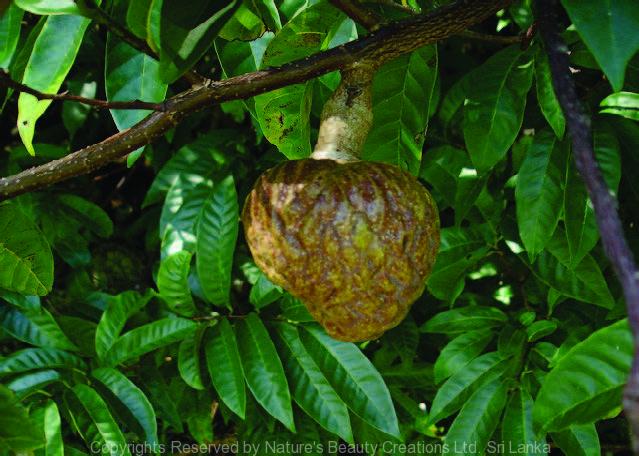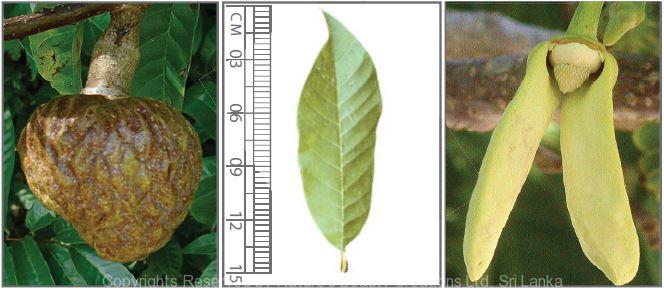

Traditional Knowledge
Useful plant parts :
Fruit
Uses in traditional medicine :
- A cup of fresh fruit juice is taken early morning by patients suffering from indigestion
Scientific Research
Chemical constituents:
Acetogenins: reticulatacin, cis-/trans-isomurisolenin and cis-/trans-murisolinone, annoreticuin, annoreticuin-9-one, bullatacin, squamocin, cis-/trans-bullatacinone from bark and seeds
Bioactivity :
Aqueous extract of plant: inhibits platelet aggregation; methanol extract of leaves: antihyperglycaemic, cytotoxic; petroleum ether extract of bark: analgaesic, anti-inflammatory
Clinical:
Note :
Ripe fruits are edible
References : Chang, F. R. et al., (1998), Acetogenins from seeds of Annona recticu- lata, Phytochemistry, 47(6), 1057-1061 Chan, F. R. et al., (1993), Studies on the Acetogenins of Formosan Annonaceous Plants, II. Cytotoxic Acetogenins from Annona reticulate, Journal of Natural Products, 56(10), 1688-1694. Chavan, M. J. et al., (2012), Analgesic and Antiinflammatory Activity of Kaur-16-en-19-oic acid from Annona reticulata L. Bark, Phytotherapy Research, 26(2), 273-276. Chavan, M. J. et al., (2012), Analgesic and anti-inflammatory activities of the sesquiterpene fraction from Annona reticulata L. Bark, Nat Prod Res, 26(16),1515-8. Rahman, S. K. M. et al., (2011), Antihyperglycemic Studies with Methanol Extract of Annona reticulata L. (Annonaceae) and Carissa carandas L. (Apocynaceae) Leaves in Swiss Albino Mice, Advances in Natural and Applied Sciences, 5(2), 218-222. Saad, J. M. et al., (1993), Reticulatacin: A new bioactive acetogenin from Annona reticulate (Annonaceae), Tetrahedron, 47(16-17), 2751-2756. Villar, R. et al., (1997), Screening of 17 Guatemalan medicinal plants for platelet antiaggregant activity, Phytotherapy Research, 11(6), 441-445.
Copyrights Reserved By
Natures Beauty Creations



